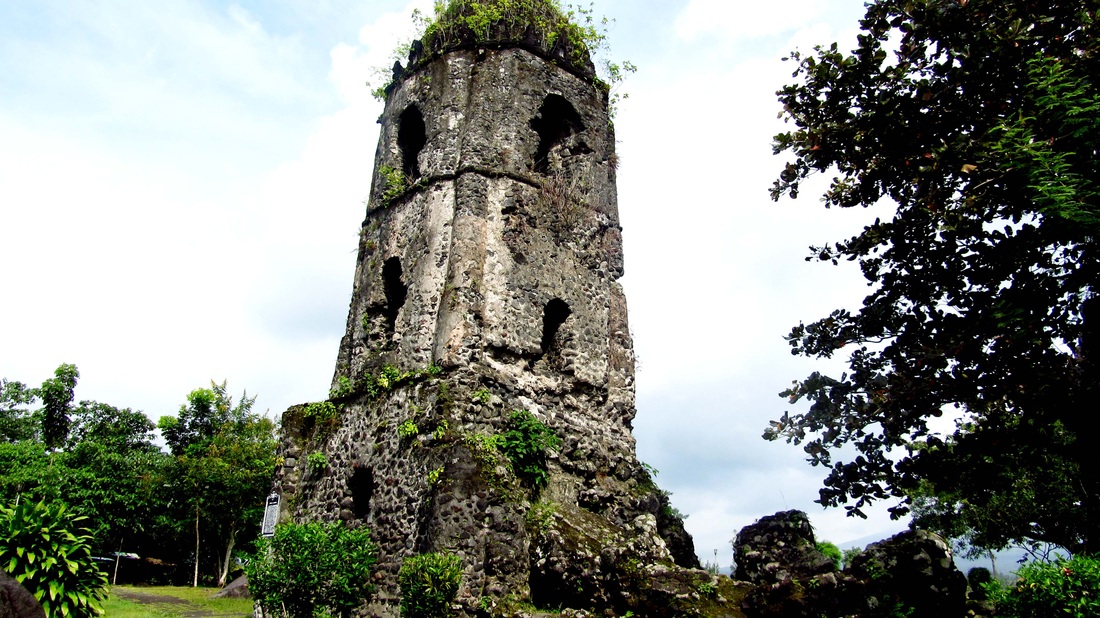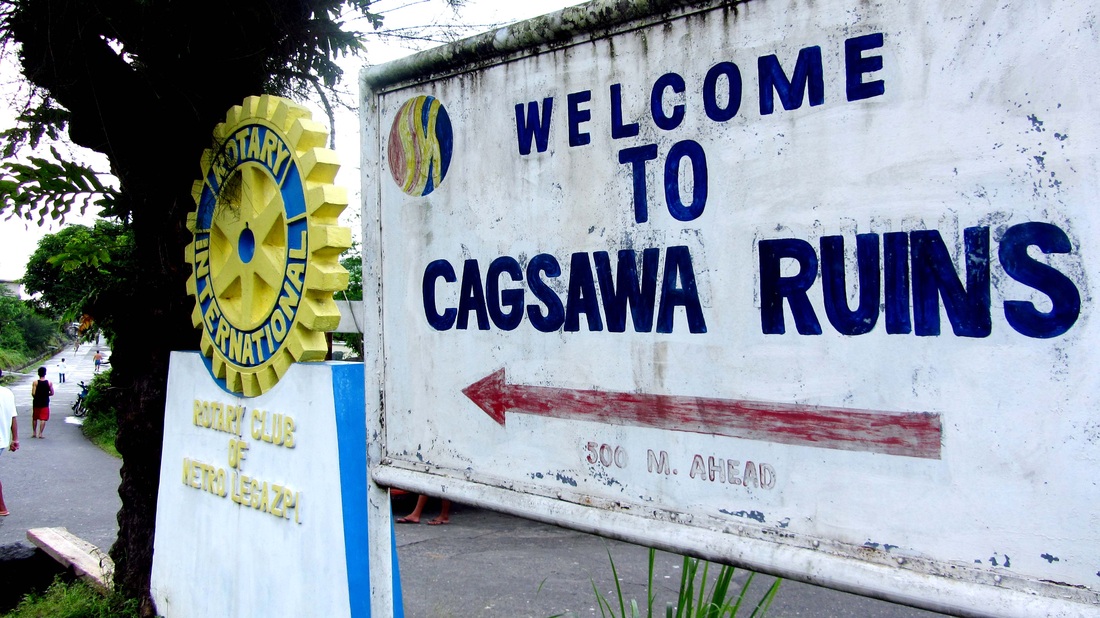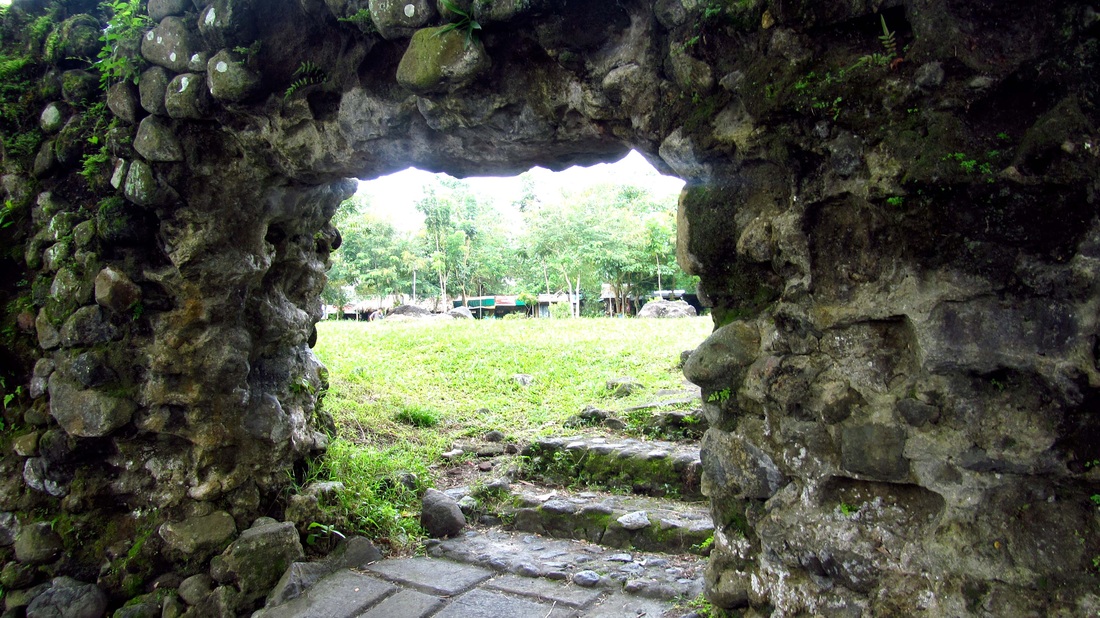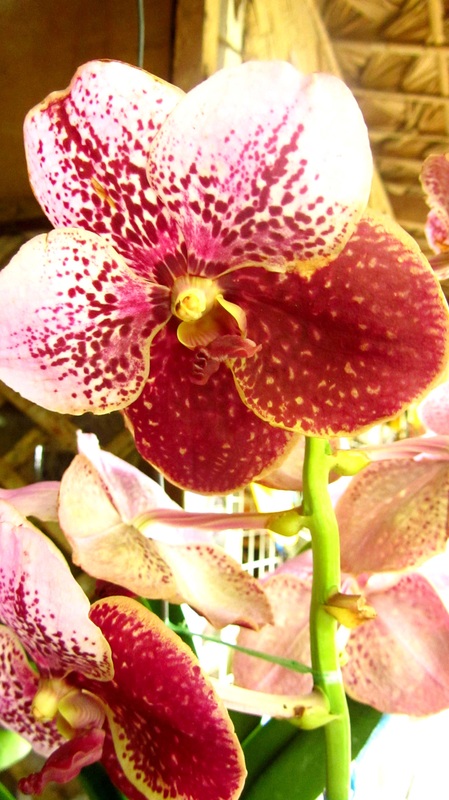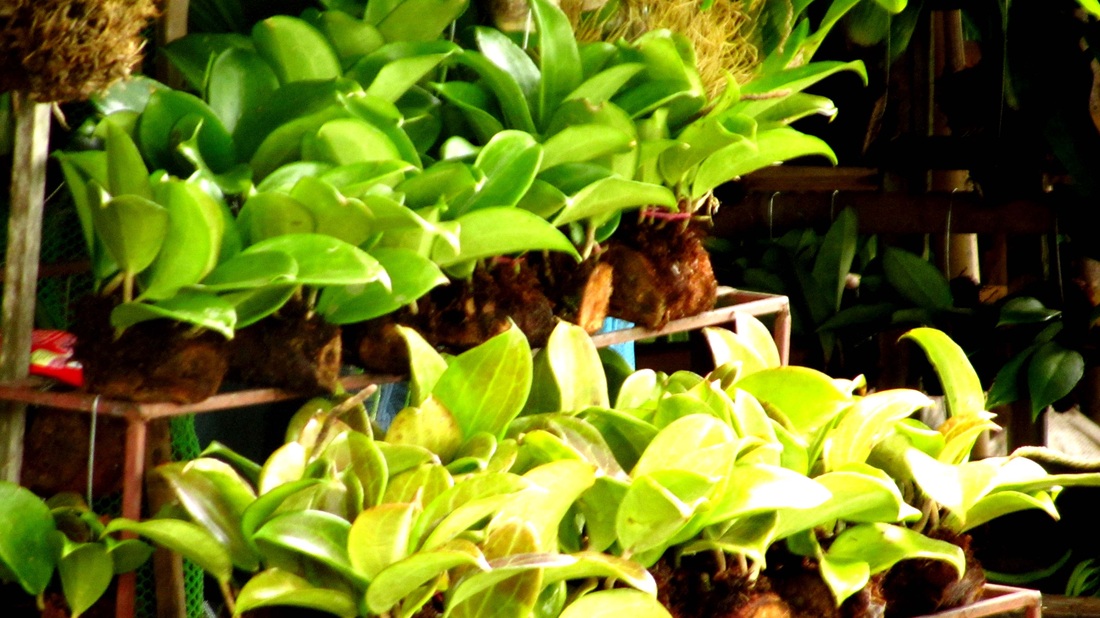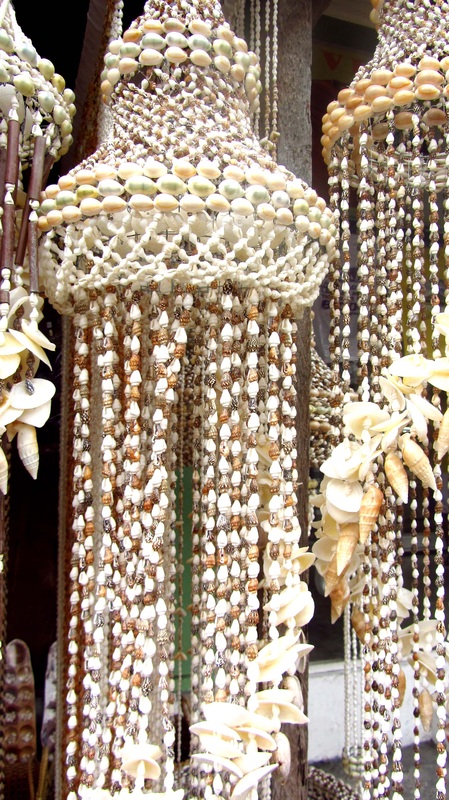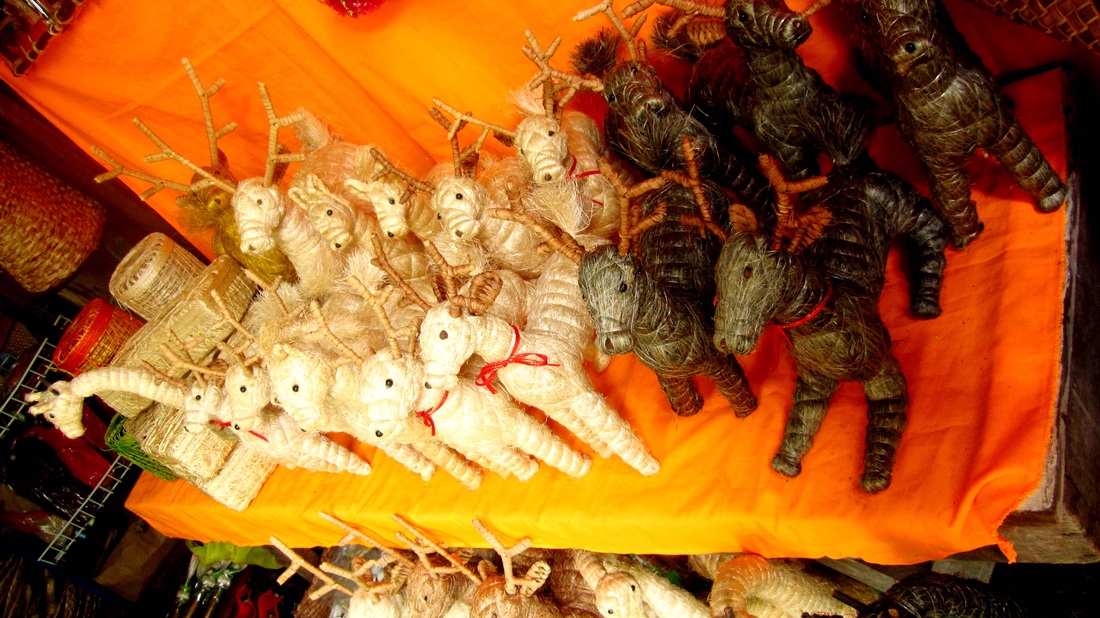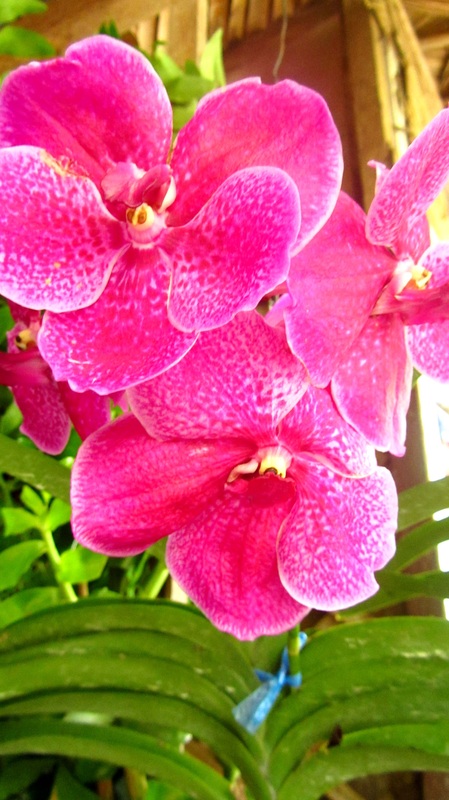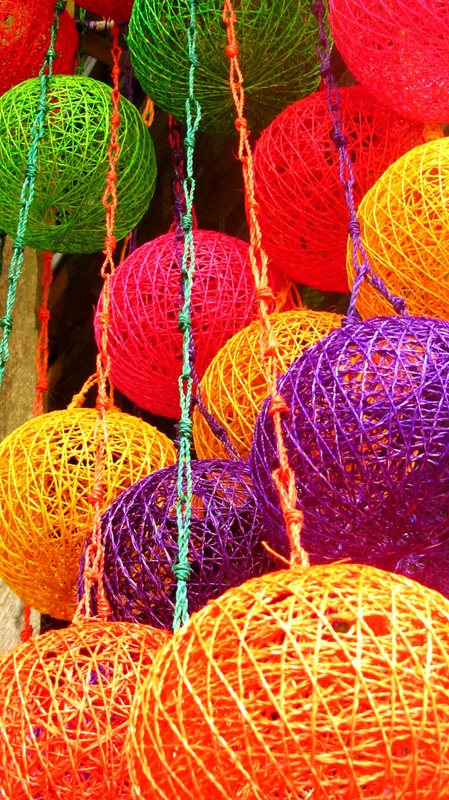
The Cagsawa Ruins (also spelled as Kagsawa or Cagsaua) are the remnants of an 18th century Franciscan church, the Cagsawa church, built in 1724 and destroyed by the 1814 eruption of the Mayon Volcano. They are located in Barangay Busay, Cagsawa, in the municipality of Daraga, Albay, Philippines.
The ruins of the Cagsawa church are now the site of the Cagsawa Ruins Park, one of the most popular tourist destinations in Albay. It is also the site of the Cagsawa Branch of the National Museum of the Philippines (also known simply as the Cagsawa National Museum). The museum was formally inaugurated on October 30, 1992 on land donated by the municipality of Daraga. It is the third largest regional branch of the National Museum. It contains photographs of the volcanic eruptions of Mount Mayon as well as geological and archeological exhibits.
Cagsawa was also subjected to the Super Typhoon Durian (designated Typhoon Reming by PAGASA) in 2006. The ruins were unharmed even as the typhoon devastated the surrounding countryside with mudslides and lahar that killed at least 1,266 people. The incident is similar to another catastrophe in the same region in 1825, shortly after the 1814 Mayon eruption.
The ruins of the Cagsawa church are now the site of the Cagsawa Ruins Park, one of the most popular tourist destinations in Albay. It is also the site of the Cagsawa Branch of the National Museum of the Philippines (also known simply as the Cagsawa National Museum). The museum was formally inaugurated on October 30, 1992 on land donated by the municipality of Daraga. It is the third largest regional branch of the National Museum. It contains photographs of the volcanic eruptions of Mount Mayon as well as geological and archeological exhibits.
Cagsawa was also subjected to the Super Typhoon Durian (designated Typhoon Reming by PAGASA) in 2006. The ruins were unharmed even as the typhoon devastated the surrounding countryside with mudslides and lahar that killed at least 1,266 people. The incident is similar to another catastrophe in the same region in 1825, shortly after the 1814 Mayon eruption.
The baroque church of Cagsawa was built after 1724 by Franciscan friars under Fray Francisco Blanco in the small town of Cagsawa (spelled as Cagsaua during the Hispanic occupation of the Philippines).It was supposed to replace an earlier church built in 1636 that had been burned down by Dutch pirates.
It was destroyed during the most destructive eruption of the nearby Mayon Volcano in February 1, 1814. The eruption killed an estimated 1,200 people in the surrounding areas and buried the town of Cagsawa (among others) under several hundred million cubic meters of ash. Hundreds of inhabitants of the town of Cagsawa purportedly sought refuge in the church, but were also killed by either pyroclastic flows or lahar.Only the belfry and some parts of the convent survive today, though parts of the crumbling facade were still standing long after the 1814 eruption as attested by photographs. It is believed that the facade of the structure collapsed due to earthquakes in the 1950's.
Survivors of the 1814 eruption resettled into the nearby Daraga, then a mere barrio of destroyed Cagsawa, and decided to merge the two.The Cagsawa church should not be confused with the intact church of Nuestra Señora de la Porteria (locally known as the Daraga church), built in 1773 and also located in the municipality of Daraga
It was destroyed during the most destructive eruption of the nearby Mayon Volcano in February 1, 1814. The eruption killed an estimated 1,200 people in the surrounding areas and buried the town of Cagsawa (among others) under several hundred million cubic meters of ash. Hundreds of inhabitants of the town of Cagsawa purportedly sought refuge in the church, but were also killed by either pyroclastic flows or lahar.Only the belfry and some parts of the convent survive today, though parts of the crumbling facade were still standing long after the 1814 eruption as attested by photographs. It is believed that the facade of the structure collapsed due to earthquakes in the 1950's.
Survivors of the 1814 eruption resettled into the nearby Daraga, then a mere barrio of destroyed Cagsawa, and decided to merge the two.The Cagsawa church should not be confused with the intact church of Nuestra Señora de la Porteria (locally known as the Daraga church), built in 1773 and also located in the municipality of Daraga
The ruins, currently protected in a park overseen by the municipal government of Daraga and the National Museum of the Philippines, are one of the most popular tourist destinations in the area.They are considered symbolic of the dangers of living in close proximity with the Mayon Volcano.
Source: Wikipedia
Source: Wikipedia

